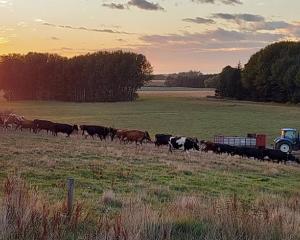
Click here for more information on Ridgeback™ technology and dairy barns
Impending steel price rises and widespread environmental reforms, changing the way cows are managed during winter, are driving a surge in enquiries for dairy barns.
This comes as some Australian dairy farmers are constructing barns and moving away from grazing cows to make the most of uncertain - and at times – expensive irrigation water entitlements.
Southland shed company, Prospec Structures Director Nathan Stewart never imagined he’d be planning so many dairy barns with farmers all at once.
“The impending government regulations have forced them to make decisions now about the future of their businesses,” he said.
“Some have been a little concerned about being forced to change their farming systems, but most realise their hands are tied and they must do something to continue operating.”
“Plus, the price of raw steel is rising, that’s no secret, people want to get in early to save money.”
Dairy barns aren’t a new concept for the New Zealand industry, but the innovative technology in the Prospec Structures Ridgeback™ barn will be a first for the country.
The Ridgeback™ barns were developed in Australia by Victorian award-winning shed manufacturer Entegra Signature Structures.
The Ridgeback™ features a concave roof and is available from Prospec Structures This patented design has 20 per cent more air exchanges per hour than traditional dairy sheds and it’s operating on farms across Australia.
Australian milk producers have combined the Ridgeback™ sheds with composting technology for ease of management, animal welfare improvements and to prevent pugging of pastures and crops.
Mr Stewart said compost barns had been the most popular with Southland dairy farmers because they provided stock with the most protection from the elements, management flexibility and most importantly, cow comfort.
“The herd can be on grass for certain amount of time, and if a big weather front is coming through, they can be put in the barn,” he said.
“They can also be used for shade in the summer.”
Housing cows during winter would not only help dairy farmers comply with the New Zealand Government’s imminent “freshwater rules”, designed to protect the nation’s water sources and environment, there’s also benefits for staff, according to Mr Stewart.
“Trying to get good staff is hard enough and then you are asking them to be out in the weather,” Mr Stewart said.
“Barns provide a better experience for workers and conditions are more manageable.”
Entegra Director Charles McCalman worked with dairy farmers constructing barns in southern and northern Australia.
He said improvements in cow condition was the first thing dairy farmers noticed with a housed herd, then they witnessed the fertility and production gains.
“Some farmers in Australia have seen phenomenal increases in milk production, up to 40 per cent, which underpins the barn’s return on investment,” he said. “On top of that, are the savings in feed wastage and herd health costs, plus staff enjoy working in the comfort of a barn.”
For more stories about sheds and Ridgeback™ barns click here or call 0800569428




















